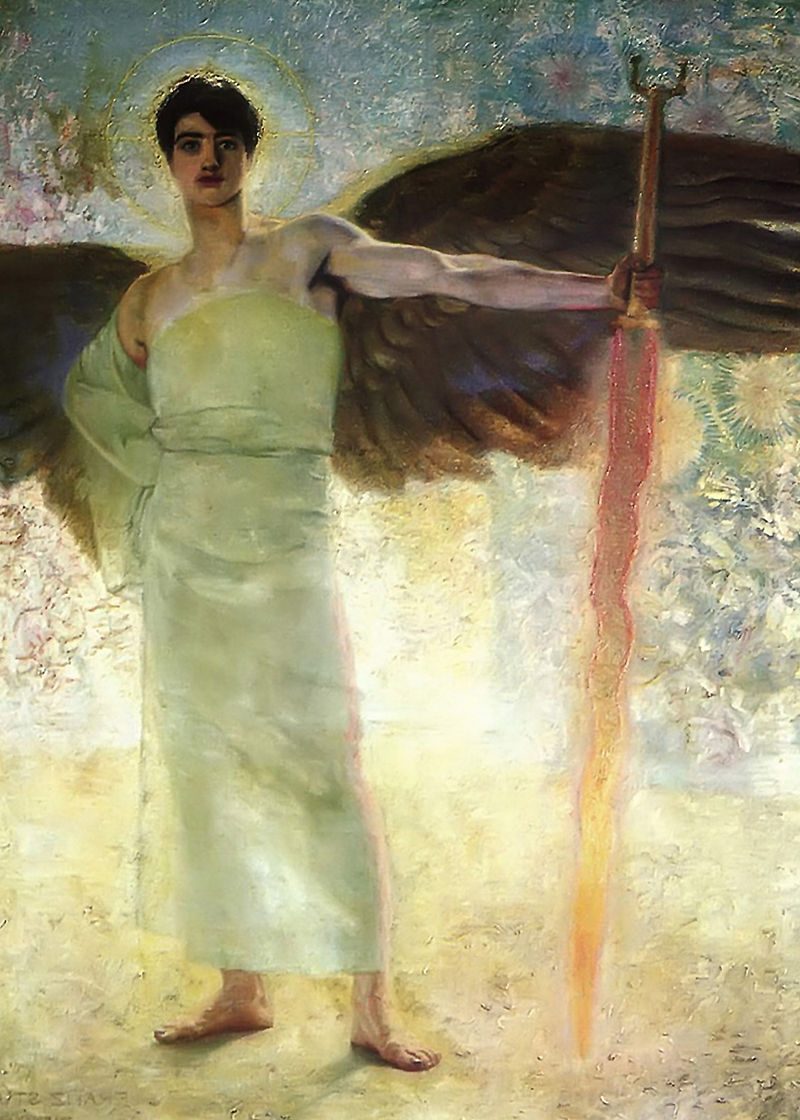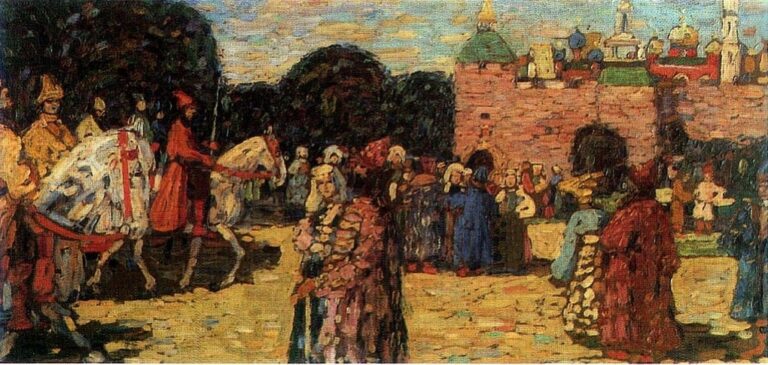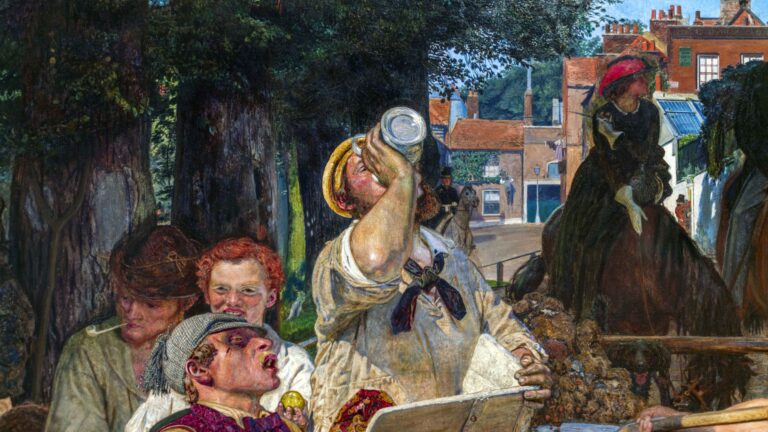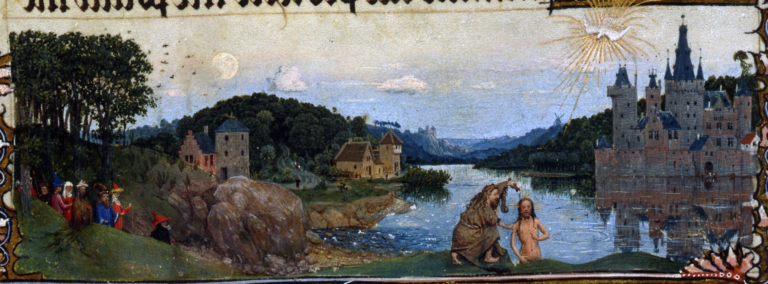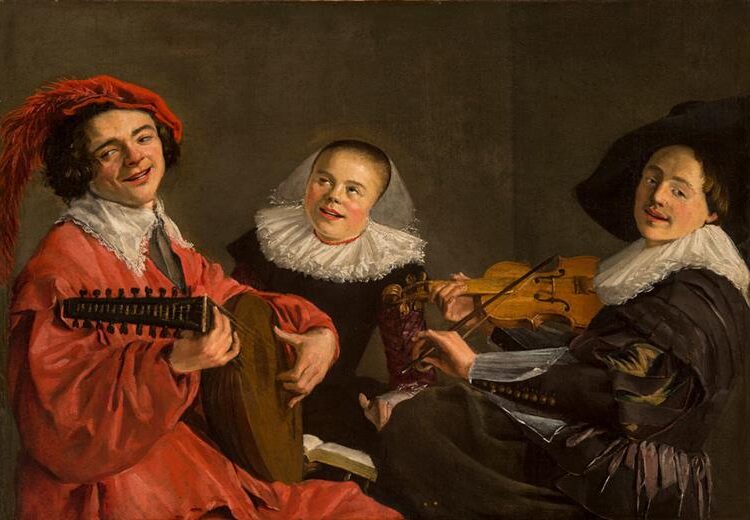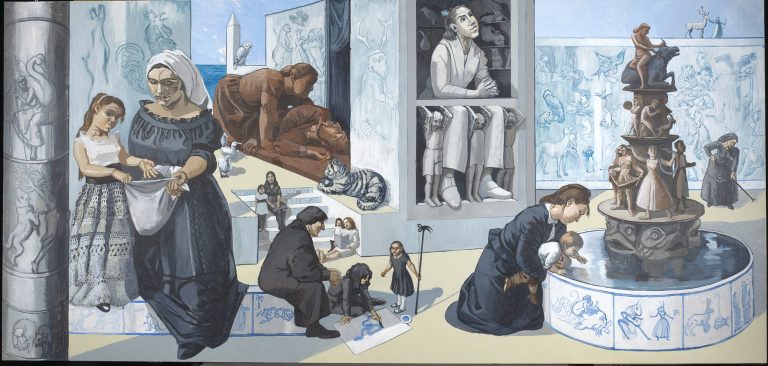Franz Stuck Painter: Symbolist Master of the Munich Secession
Born: 23 February 1863, Tettenweis, Germany
Death: 30 August 1928, Munich, Germany
Art Movement: Symbolism, Art Nouveau
Nationality: German
Influenced By: Arnold Böcklin
Institution: Academy of Fine Arts, Munich
Franz Stuck Painter: Symbolist Master of the Munich Secession
Life and Career of Franz Von Stuck
Franz von Stuck was a famous German painter, sculptor, and architect. He made a big impact on art in the late 1800s and early 1900s. His life and work took him from a small town to the top of the art world.
Early Life and Education
Franz Stuck was born on February 23, 1863, in Tettenweis, Germany. He showed talent for art as a young boy.
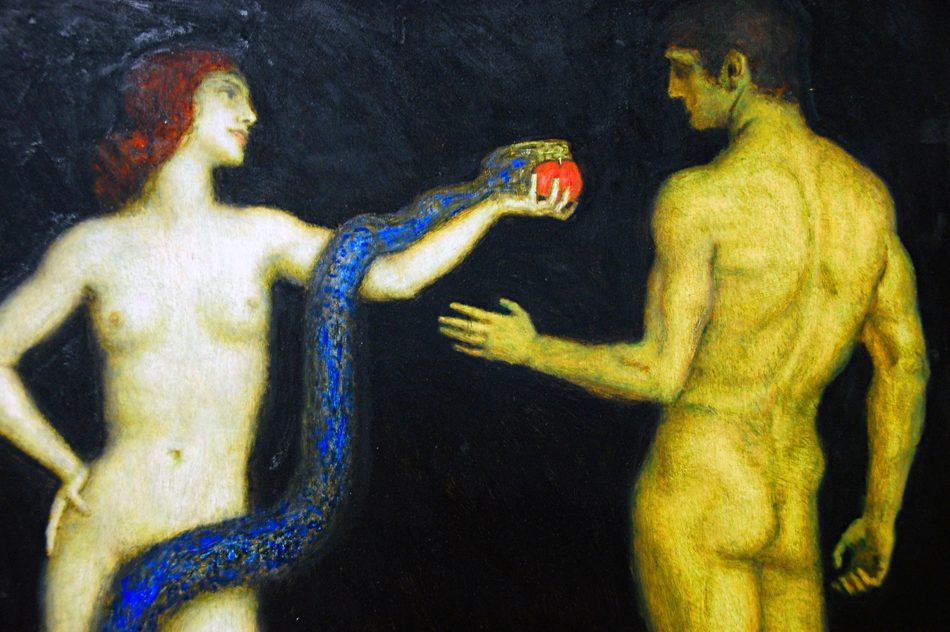
Adam and Eve (1920) by Franz von Stuck
Stuck moved to Munich to study at the Academy of Fine Arts. There, he learned to paint and sculpt.
The Academy taught him many skills. He became good at drawing and painting people and stories.
Stuck worked hard and won prizes for his art. His teachers saw that he had a bright future.
Rise to Prominence
Stuck’s art career took off in the 1890s. He painted “The Sin” in 1892, which made him famous. People loved his mythological scenes and bold style.
In 1895, Stuck became a professor at the Munich Academy. He taught many students who later became great artists.
His own art kept getting better too. He won awards and sold paintings to rich people.
The German government noticed Stuck’s talent. In 1906, they gave him a special award called the Order of Merit of the Bavarian Crown. This made him a noble, and he changed his name to Franz von Stuck.
Later Years and Death
Von Stuck built a fancy house and studio in Munich. He called it the “Villa Stuck” and designed every part of it. It showed off his skills as an artist and architect.


He kept painting and teaching into his 60s. But his style of art became less popular over time. Newer art movements took over.
Still, many people respected von Stuck for his past work.
Franz von Stuck died on August 30, 1928, in Munich. He was 65 years old. Today, art experts remember him as an important painter from his time.
Artistic Style and Major Works
Franz von Stuck was a versatile artist known for his paintings, sculptures, and architecture. His work blended classical themes with a modern Symbolist style.
Symbolist Influence
Stuck’s art was deeply rooted in Symbolism. He used mythological and biblical subjects to explore deep emotions and ideas. His paintings often featured dreamlike scenes and mysterious figures.
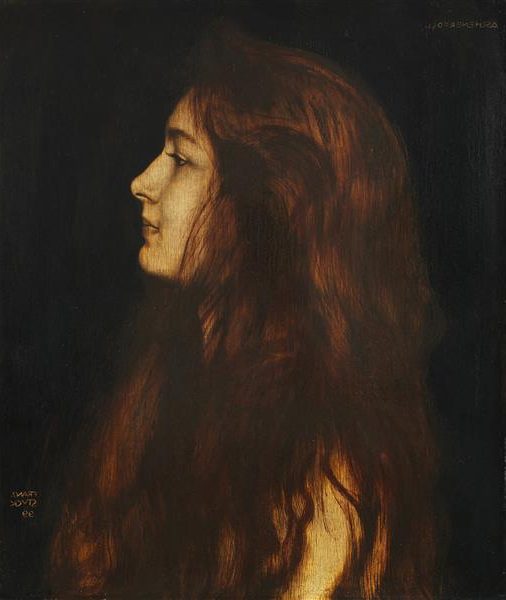

Stuck’s color choices were bold and dramatic. He used dark backgrounds to make his subjects stand out. This created a sense of drama and mystery in his work.
The artist’s style influenced many other painters of his time. His use of symbolism and mythology helped shape the German art scene.
Paintings and Iconography
Stuck’s most famous painting is “The Sin” from 1893. It shows a woman with a snake, representing temptation. This work made him famous and set the tone for his later art.
Other key paintings include “Eve” and “Guardian of Paradise.” These works use female figures to explore themes of good and evil.
Stuck often painted femme fatales – dangerous, seductive women. He also created scenes from ancient myths and the Bible.
His work “Inferno” shows his interest in dark themes. It depicts souls suffering in hell, inspired by Dante’s writing.
Sculpture and Architecture
Stuck was not just a painter. He also created sculptures and designed buildings. His most famous building is Villa Stuck in Munich.
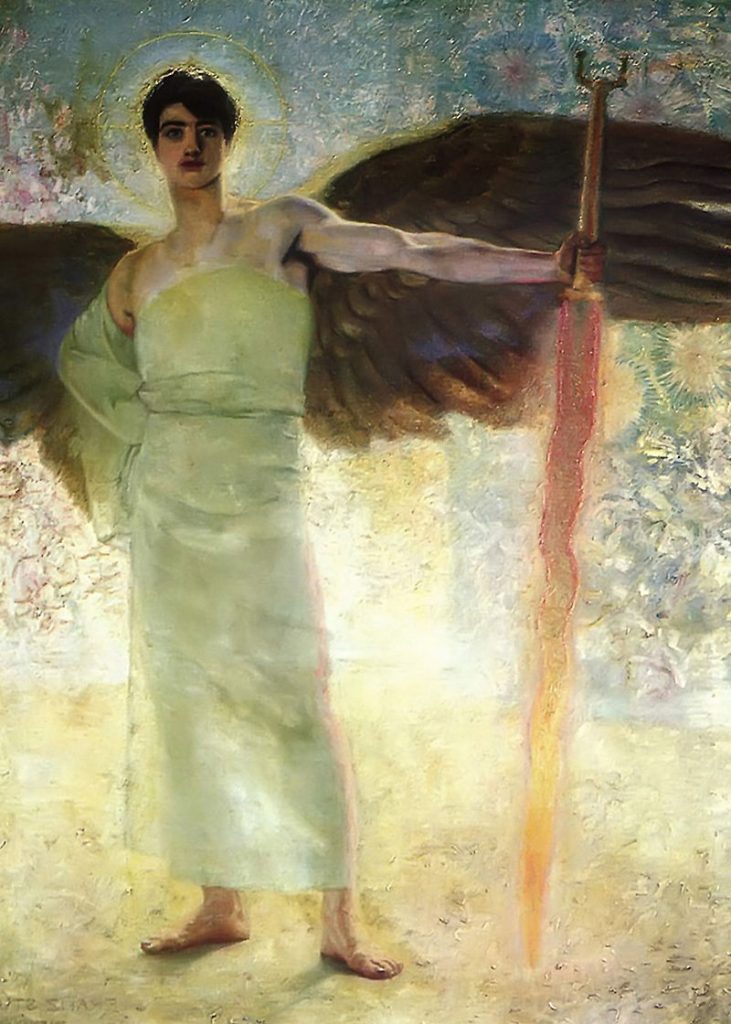
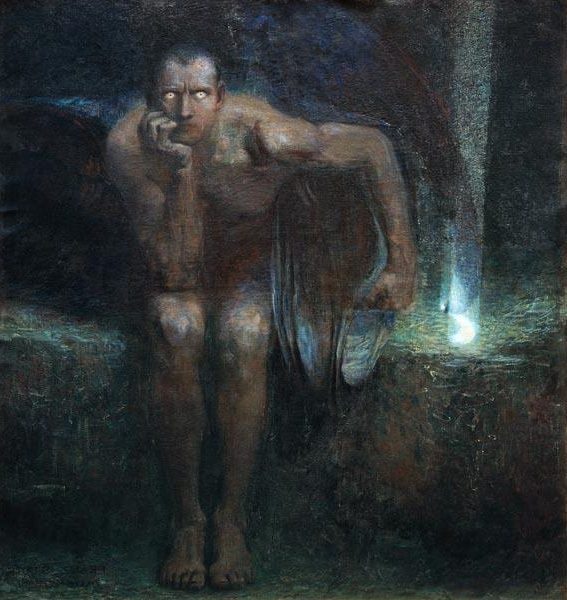
The villa shows Stuck’s idea of “Gesamtkunstwerk” – a total work of art. He designed everything in the house, from the walls to the furniture.
Stuck made frames for his paintings that were works of art themselves. These ornate frames became part of the overall artwork.
His sculptures often featured the same themes as his paintings. He created figures from mythology and explored ideas about life and death.
Influence and Legacy
Franz Stuck left a lasting mark on German art. He shaped many young artists and his home became a museum that keeps his work alive.
On Contemporary Artists
Stuck taught at the Academy of Fine Arts in Munich. He had a big impact on many students who went on to become famous.
Paul Klee, Wassily Kandinsky, and Josef Albers all learned from him. These artists helped start new art movements in the 20th century.
Stuck was part of the Munich Secession group. This group broke away from old art styles. They wanted to try new things. Stuck’s bold art inspired other avant-garde artists to be daring.
Villa Stuck Museum
Stuck built a fancy house called Villa Stuck in Munich. He designed every part of it himself. After he died, it became a museum.
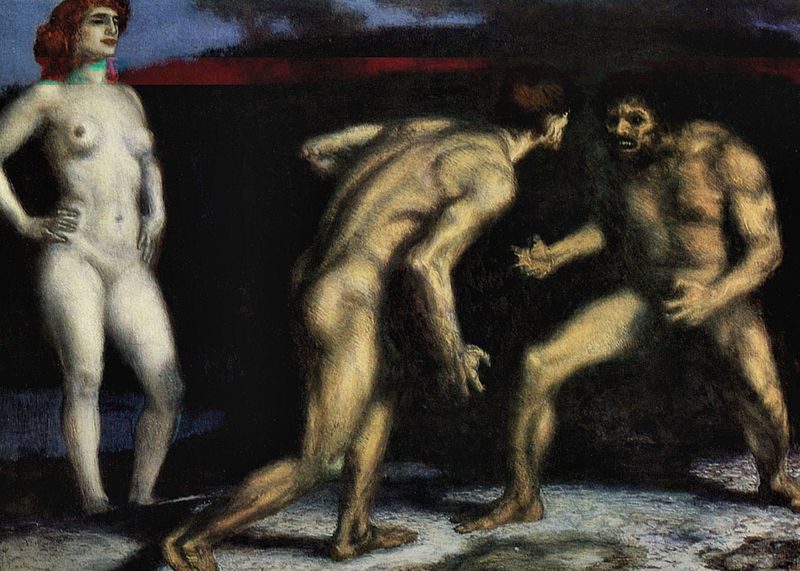
The Struggle for Woman (1905) by Franz von Stuck
The museum shows Stuck’s paintings, sculptures, and furniture. It helps people learn about his work and life. The Villa Stuck Museum is still open today. It keeps Stuck’s art and ideas alive for new fans to enjoy.
Frequently Asked Questions
Franz Stuck’s artwork sparked many questions about his unique style and symbolism. His paintings explored mythology, sensuality, and the human psyche in bold ways that left lasting impressions.
What is the historical significance of Franz Stuck’s ‘The Wild Hunt’?
‘The Wild Hunt’ showcased Stuck’s skill in depicting mythological scenes. The painting brought ancient folklore to life with dramatic flair. It helped establish Stuck as a leading Symbolist artist in late 19th century Germany.
How does Franz Stuck’s depiction of Dante’s Inferno compare with other artists’ interpretations?
Stuck’s ‘Inferno’ stood out for its striking use of color and emotive figures. Unlike more literal interpretations, Stuck focused on conveying the emotional essence of Dante’s hell. His version emphasized the torment and anguish of the damned souls.
Which museum houses Franz Stuck’s ‘Inferno’ painting?
The ‘Inferno’ painting is displayed at the Villa Stuck Museum in Munich, Germany. This museum was Stuck’s former home and studio. It now showcases many of his most famous works in their original setting.
What themes are commonly explored in Franz Stuck’s artwork?
Stuck often painted scenes from Greek mythology and the Bible. He was fascinated by themes of sin, temptation, and human desire. His work frequently featured nude figures and explored the conflict between good and evil.
Can you detail the symbolism found in Stuck’s ‘The Kiss of the Sphinx’?
In ‘The Kiss of the Sphinx’, the sphinx represents mystery and danger. The man being kissed symbolizes human weakness in the face of temptation. The dark background creates a sense of foreboding. This painting reflects Stuck’s interest in fatal attractions.
How did World War I impact the life and work of Franz Stuck?
World War I marked a turning point in Stuck’s career. The conflict’s horrors led him to create more somber, introspective works. His post-war paintings showed less of the bold sensuality of his earlier pieces. Stuck focused more on landscapes and portraiture during this period.



